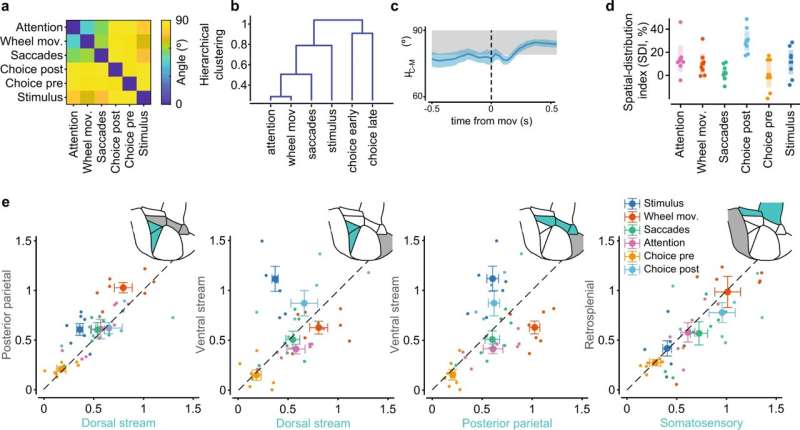This article has been reviewed according to Science X's editorial process and policies. Editors have highlighted the following attributes while ensuring the content's credibility:
fact-checked
peer-reviewed publication
trusted source
proofread
A peek into the interplay between vision and decision making in the brain

An all-RIKEN team of neuroscientists has mapped out neurons in the mouse visual system that are selectively activated during decision-making, and may directly influence this process. To achieve this, they combined a cleverly-crafted behavioral task with sophisticated imaging of neurons.
The choices we make involve diverse sectors of the brain, including those responsible for cognition, movement and other activities. This complexity has made it challenging for neuroscientists to tease out which neural circuits directly coordinate decision making.
Many important decisions start with responding to what we see in front of us. But the visual centers of the mammalian brain rely on much more information than is supplied by the eyes alone. "Most of the inputs come from within the brain," says Andrea Benucci of the RIKEN Center for Brain Science. "And they carry a great diversity of non-visual signals."
This led Benucci to hypothesize that these other sources of data may represent choice-guiding neuronal inputs. However, confirming this would require designing an experiment that minimized the confounding effects of other brain functions that intersect with the decision-making process.
To tackle this challenge, Benucci and his team used a behavioral task for mice that minimized the involvement of memory, body movements and responses to novel stimuli. This entailed training animals to earn a water reward by aligning the orientation of a projected image to match that of a target pattern. Once the animals had mastered this task, the researchers used a fluorescent "reporter" protein to monitor the firing of neurons in different regions of the brain as animals pursued their reward.
Their imaging data revealed subsets of neurons that appeared to be directly involved in choice. These were mostly located in regions of the brain within the ventral visual stream, a system of neurons primarily involved in identifying features in a visual scene. The strength of these signals depended both on the difficulty of the task and on the extent to which the animal's attention was focused on the orientation task.
Benucci and colleagues validated the activity patterns they had observed with a neural-network-based computational model, which they trained using the actual data from animals. The work is published in the journal Nature Communications.
"In this study, we not only uncovered signatures of choice, but we also found well-structured representational dynamics of choice signals that reflected the context-dependent nature of the decision-making process," says Benucci. "The model confirmed that the recorded signals indeed reflect network computations associated with solving this specific task using choice strategies matching those of the mice."
Intriguingly, the choice signals identified here were produced by a relatively small number of sparsely dispersed neurons within the ventral stream. Benucci's team is now exploring the extent to which these "loners" influence vision-based decision making.
More information: Javier G. Orlandi et al, Distributed context-dependent choice information in mouse posterior cortex, Nature Communications (2023). DOI: 10.1038/s41467-023-35824-6


















